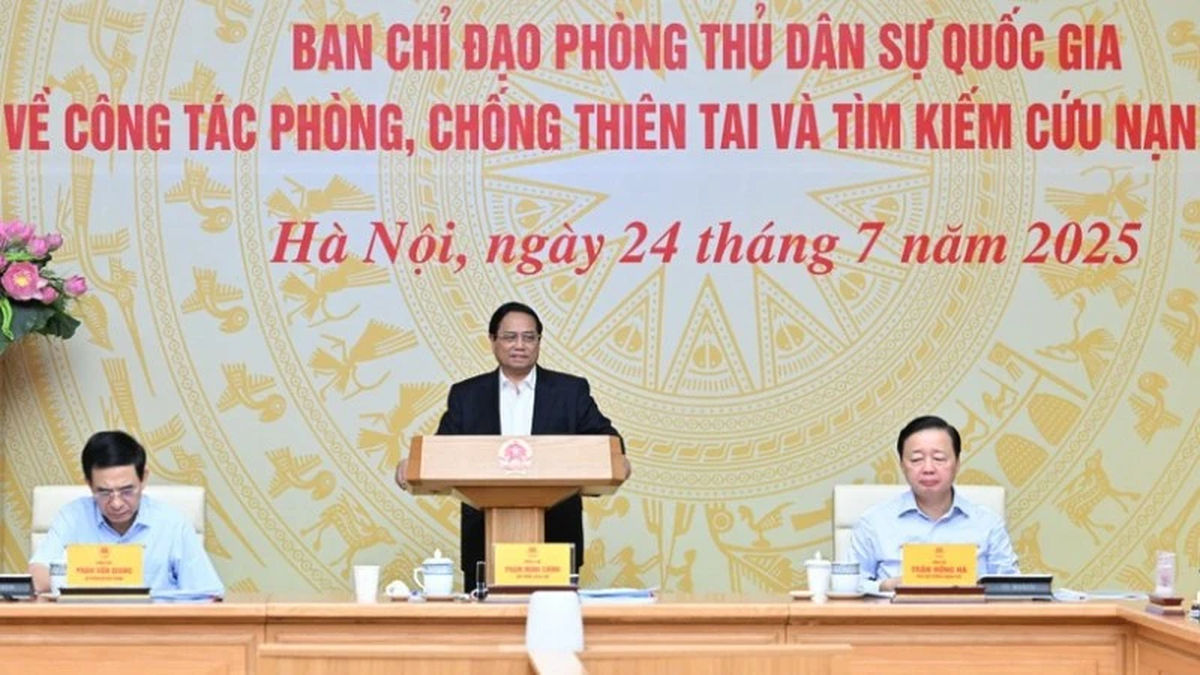On May 22, Hanoi University of Science and Technology announced a plan to convert admission scores between admission methods in 2025, according to the instructions of the Ministry of Education and Training (MOET).
Ministry of Education and Training requires clear and easy-to-understand conversion
Hanoi University of Science and Technology applies the percentile method to find the equivalence between 3 methods: talent selection, based on thinking assessment (TSA) test scores and high school graduation exam scores.
In addition, Hanoi University of Science and Technology analyzed admission data, the score distribution of methods with the original combination of A00, as a basis for determining the relative percentile range. In which, the top % of high school graduation exam scores is calculated based on the total score of the original admission combination of A00 for candidates with scores from the floor to the highest level (30). The top % of talent admission scores for categories 1.2 (based on international certificates), 1.3 (based on capacity profile and interview) and the top % of thinking assessment scores are also calculated similarly.

Candidates in Ho Chi Minh City learn about enrollment information in 2025. Photo: QUANG LIEM
The specific percentile values are calculated based on the 2025 graduation exam, TSA, and talent selection scores, along with the academic performance of students admitted by the respective methods.
For other high school graduation exam score combinations other than A00, Hanoi University of Science and Technology will calculate based on the corresponding difference in scores announced by the Ministry of Education and Training. From there, the school will provide a formula for calculating equivalent standard scores between methods.
Previously, the Ministry of Education and Training had provided guidance on developing rules for converting equivalent admission scores and input thresholds between admission methods and combinations when training institutions simultaneously use multiple admission methods and combinations for a training major/group of majors.
According to the requirements of the Ministry of Education and Training, when developing equivalence conversion rules, schools must comply with the following principles: Ensuring equivalence; based on real input requirements; fairness, transparency, publicity and consistency; ensuring scientific , practical and simple, easy to understand nature.
Specifically, the conversion rule must ensure that the admission scores between the methods and admission combinations of an admission code are equivalent in terms of meeting the input requirements of the corresponding training program, major, and group of majors. This rule must also be linked to the specific requirements of the training program/major.
The main criteria used for admission in each method must focus on assessing the basic knowledge and core competencies required by the field of study...; be built on scientific and practical grounds, clearly designed and easy to understand so that candidates and society can grasp and monitor; avoid complicated formulas or unclear calculation methods, leading to misunderstandings.
Reality is too complicated and difficult to understand.
According to the analysis of the technical advisory team, the percentile method is recommended for use in the case of converting scores between exams to ensure candidate rankings, fairness, transparency and stability across exam periods and admission years.
This method is based on the score distribution of the two exams, determining the score at the same percentile for conversion. In this way, percentiles convert scores into percentile levels, which help indicate the position of the candidate in the overall score of the group. Percentiles are used to compare candidates in relation to other candidates taking the exam. This conversion method converts scores into percentiles, that is, places a candidate's score in a specific percentile according to the distribution of exam scores.
In this year's university entrance exam, most universities still use many admission methods. However, in general, there are still 3 main admission methods: Considering high school graduation exam scores, considering academic records, and considering competency assessment scores (thinking assessment, computer-based competency assessment, specialized competency assessment, etc.). Among these admission methods, high school graduation exam scores and academic records are the most complete for all candidates.
The conversion of scores between methods is understood as the equivalent score between methods. In which, if the school uses 2 or more methods, the score of 1 method will be used as the standard, the scores of other methods will be converted to the equivalent score.
Dr. Nguyen Quoc Anh, Vice Principal of Ho Chi Minh City University of Technology, said that the most basic principle is that the conversion of scores must ensure fairness and accuracy between methods. However, the conversion of scores between admission methods in the 2025 university admission regulations may encounter some difficulties.
Specifically, there are differences in assessment criteria because each admission method may use different criteria and assessment methods. Data reliability is also an issue, because data from different exams or admission methods may not be consistent in reliability, leading to difficulties in accurately converting scores. Score conversion requires complex formulas and models to ensure fairness, which can be difficult for schools to implement.
According to the head of the training department of a university in Ho Chi Minh City, in terms of ideas, the conversion of scores aims to create equivalent benchmark scores between methods, avoiding the situation where the benchmark score of one method is low and the score of another method is too high. However, the general guidance of the Ministry of Education and Training is too complicated.
The head of the training department said that after the candidates have their high school graduation exam results, the Ministry of Education and Training has enough data to compare the difference with their transcript scores. From there, a general formula can be developed to convert the equivalent score between the high school graduation exam score and the transcript score. With the ability assessment test scores, thinking assessment scores, etc., the proportion of candidates participating in this exam compared to more than 1 million candidates taking the graduation exam is not much, not enough to take a sample.
Students and parents are worried
Ms. Tran Ngoc Lan - whose child is in grade 12 at Tran Phu High School, Hoan Kiem District, Hanoi - commented that "the more I look, the more confused I get". "The registration date is approaching, but my child and his family do not know how many points they will get after the conversion. The time to announce the conversion table close to the date of adjusting the application makes students easily passive. It is difficult for them to accurately assess their chances of admission when the same score can be converted to different results at each school" - she commented.
Sharing the same view, the principal of a high school in Cau Giay District, Hanoi, said that in recent days, students at the school have also expressed their concerns. The difference between admission methods creates pressure to choose and prepare. In addition, each school may use a different conversion formula, causing inconsistency and difficulty in comparison.
"The goal of the Ministry of Education and Training is to create fairness, but without clear and transparent guidance, it will put more pressure on students, instead of reducing the burden. Students who do not have access to information or support are at a disadvantage during the registration and admission process," the principal said.
According to Dr. Nguyen Quoc Anh, the reaction from students and parents is also an issue that needs to be taken into account. Students and parents may feel dissatisfied or unfair if they feel that the converted scores do not accurately reflect their abilities.
Source: https://nld.com.vn/quy-doi-diem-xet-tuyen-dai-hoc-huong-dan-van-roi-196250522202801156.htm































![[Photo] Signing of cooperation between ministries, branches and localities of Vietnam and Senegal](https://vphoto.vietnam.vn/thumb/1200x675/vietnam/resource/IMAGE/2025/7/24/6147c654b0ae4f2793188e982e272651)








































































Comment (0)